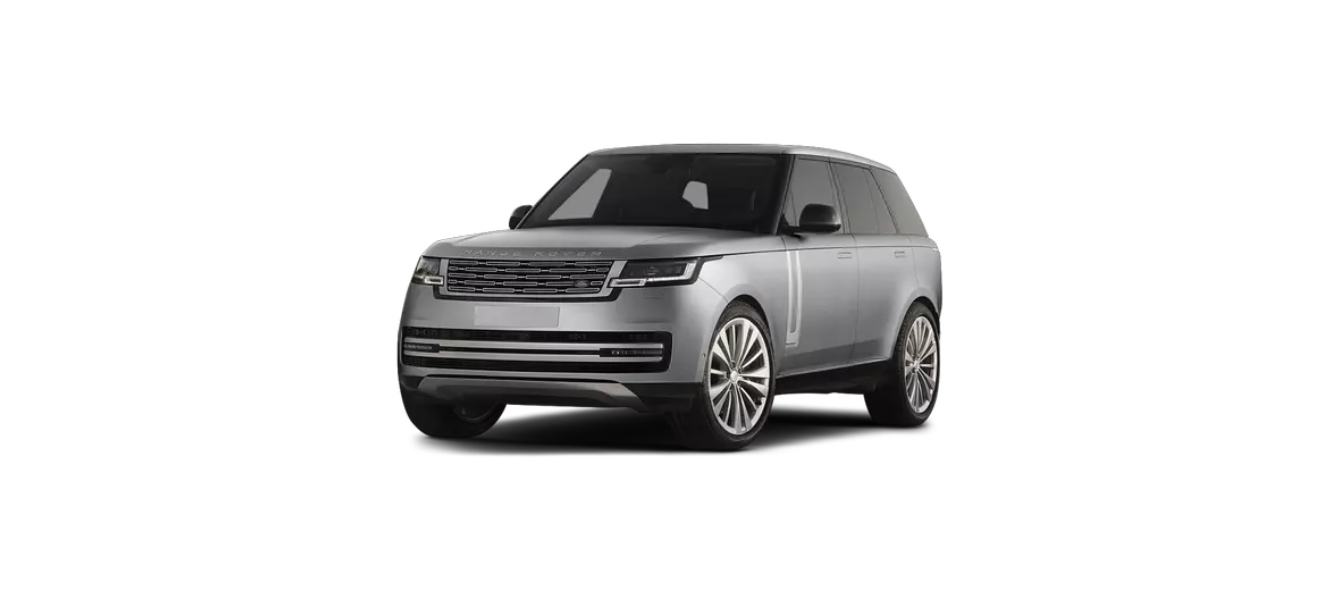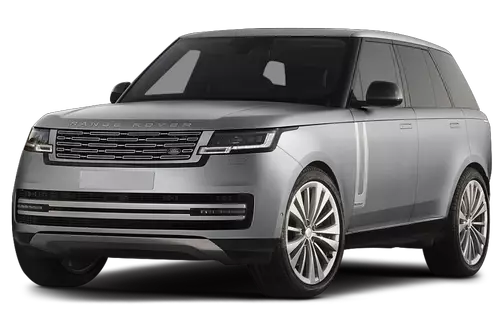2022 Land Rover Range Rover Brakes Owners Manual




2022 Land Rover Range Rover Brakes


IMPORTANT INFORMATION
Make sure the following warnings have been read and fully understood. Failure to follow the guidance given could affect vehicle safety, leading to serious injury or death.
If the red brake warning lamp illuminates, safely bring the vehicle to a stop as quickly as possible. Seek qualified assistance.
If the amber brake warning lamp illuminates, drive with care, avoiding heavy brake pedal application. Seek qualified assistance.
Do not rest a foot on the brake pedal while the vehicle is in motion. Doing so can damage the braking system and reduce braking efficiency.
Never allow the vehicle to coast (freewheel) with the engine switched off. The engine must be running to provide full braking assistance. The brakes still function with the engine switched off, but far more brake pedal pressure is required to operate them.
Never place non-approved floor matting or any other obstructions under the brake pedal. The result can be restricted pedal travel and reduced braking efficiency.
Driving through heavy rain or water can have an adverse effect on braking efficiency. Under such circumstances, it is recommended to lightly apply the brakes intermittently, to dry the brakes.
Do not pump the brake pedal at any time. Doing so interrupts the operation of the braking system and may increase stopping distances.
Repeated or prolonged heavy braking can cause the brakes and the brake fluid to overheat, resulting in reduced braking efficiency and brake failure.
Do not drive if the instrument panel displays the Brakes Overheating message. Stop the vehicle as soon as safety permits. Allow the brakes to cool. If necessary, seek qualified assistance before continuing. Driving with overheated brakes can cause increased braking distance or brake failure.
The red brake warning lamp and a continuous chime accompany the Brakes Overheating message. The chime ceases when the vehicle is stationary. See BRAKE (RED) and BRAKE (AMBER).
STEEP SLOPES
If the vehicle is stationary on a steep, slippery slope, it may begin to slide, even with the brakes applied. Without wheel rotation, the Anti-lock Braking System (ABS) cannot determine vehicle movement. To counteract this, briefly release the brake pedal, allowing wheel rotation. Re-apply the brake pedal to allow the ABS to gain control.
The vehicle needs to be in Neutral (N) or an appropriate gear to descend the slope. The Electric Parking Brake (EPB) must not be applied.
EMERGENCY BRAKE ASSIST (EBA)
If the brakes are rapidly applied, the Emergency Brake Assist (EBA) system automatically boosts the braking force to its maximum. The result is that the EBA system helps to bring the vehicle to a stop as quickly as possible.
The EBA system stops operating as soon as the brake pedal is released.
The amber brake warning lamp indicates an EBA system fault and the instrument panel displays a warning message. In this event, drive with care, avoiding heavy brake pedal application. Seek qualified assistance. See BRAKE (AMBER).
ELECTRONIC BRAKE-FORCE DISTRIBUTION (EBD)
The Electronic Brake-force Distribution (EBD) system controls the balance of braking forces supplied to the front and rear wheels. The result is that the EBD system helps to maintain maximum braking efficiency and stability.
If the vehicle has a light load, e.g., driver only and no luggage, the EBD system reduces the braking force applied to the rear wheels. If the vehicle is heavily laden, e.g., passengers and luggage, the EBD system increases the braking force to the rear wheels.
The red brake warning lamp indicates an EBD system fault and the instrument panel displays a warning message. In this event, gently and safely stop the vehicle. Seek qualified assistance. See BRAKE (RED).
ELECTRIC PARKING BRAKE (EPB)
Do not rely on the Electric Parking Brake (EPB) to operate correctly if the brake warning lamp illuminates. Seek qualified assistance urgently. Failure to do so may result in accidents causing serious injury or death.
Do not rely on the EPB to operate correctly if the EPB warning lamp flashes. Seek qualified assistance urgently. Failure to do so may result in accidents causing serious injury or death.
The EPB operates on the rear wheels, therefore, secure parking of the vehicle is dependent on being on a hard and stable surface.
Do not rely on the EPB to operate effectively if the rear wheels have been immersed in mud or water. Doing so may result in damage to the vehicle.
The EPB switch is located on the center console. Operate as follows:
- With the ignition switched on, press the brake pedal and press down on the EPB switch, to release the EPB.
- Pull the EPB switch up and release it, to apply the EPB. The EPB warning lamp illuminates to confirm. See ELECTRIC PARKING BRAKE (EPB) (RED). NOTES
The red EPB warning lamp continues to illuminate for at least 10 seconds after the ignition has been switched off.
The EPB automatically applies when Park (P) is selected.
To prevent automatic operation, with the vehicle stationary, press and hold the EPB switch in the release position before selecting P.
The EPB applies automatically if the ignition is switched off and the vehicle’s speed is below 2 mph (3 km/h).
To prevent automatic operation, when the vehicle is stationary, press and hold the EPB switch in the release position. Within 5 seconds, switch off the ignition and continue to hold the EPB switch for a further 2 seconds.
If the EPB is operated when the vehicle’s speed is less than 2 mph (3 km/h), the vehicle is brought to an abrupt stop. The stop lights do not illuminate.
Driving the vehicle with the EPB applied will cause serious damage to the braking system.
When stationary, with the EPB applied and the transmission engaged in a forward or reverse gear, press the accelerator pedal to gradually release the EPB. The result is that the vehicle can be driven away smoothly.
When shifting from P with the EPB applied, the EPB automatically releases to allow a smooth drive away.
Automatic EPB release for pulling away from a standstill is only possible when the driver’s door is closed, or the driver’s seat belt is buckled.
To override the EPB automatic release, pull the EPB switch up and hold.
In an emergency, apply and hold the EPB switch to give a controlled reduction in the vehicle’s speed. The vehicle can also be brought to a complete stop. The vehicle must be traveling at more than 2 mph (3 km/h), and the accelerator pedal must also be released. The amber brake warning lamp flashes, a warning chime sounds, and the instrument panel displays a warning message. The stop lights illuminate. Release the EPB switch, or press the accelerator pedal to release the EPB.
If an EPB fault is detected, the instrument panel displays a warning message. The amber brake warning lamp also illuminates. See BRAKE (AMBER).
If a fault is detected during EPB operation, the instrument panel displays a warning message. The red EPB warning lamp also flashes. See ELECTRIC PARKING BRAKE (EPB) (RED).
To protect against unintentional vehicle movement, the EPB is automatically applied when the driver is detected to be exiting the vehicle. The EPB is applied when Drive (D), Sport (S) or Reverse (R) is selected and all the following conditions exist:
- The vehicle is stationary.
- The driver’s seat belt is unfastened or the driver’s door is open.
- The brake pedal is released.
The EPB drive-away feature operates if:
- The EPB is applied.
- The engine is running.
- A forward or reverse gear is selected.
- The driver’s seat belt is fastened or the driver’s door is closed.*
- The accelerator pedal is pressed.
* If it is believed that the driver has left the vehicle, only the driver’s seat belt is monitored.
The vehicle may move briefly before the EPB is applied. On a steep slope, the EPB does not apply if the significant vehicle speed is reached as the brake pedal is released.
If the EPB is released, it does not automatically re-apply until additional action is detected that indicates the driver is exiting the vehicle.
HILL START ASSIST
Hill start assist briefly holds the vehicle stationary after the brake pedal is released, when pulling away uphill. The system allows the driver time to release the brake pedal and press the accelerator pedal. When the accelerator pedal is pressed, the system smoothly releases the brake pressure, allowing the vehicle to pull away without rolling backward.
Hill start assist operates if the auto brake hold function has been disabled. See IMPORTANT INFORMATION.
Hill start assist is not available if there is a Dynamic Stability Control (DSC) fault. See DYNAMIC STABILITY CONTROL (DSC) (AMBER).
Recent Posts
VW Jetta Engine Fuse Box Diagram
Access the comprehensive 2010-2018 VW Jetta Passenger Fuse Box Diagram to troubleshoot electrical issues effectively.…
VW Jetta Passenger Fuse Box Diagram
Explore the comprehensive VW Jetta Passenger Fuse Box Diagram to troubleshoot electrical issues effectively. Understand…
2023 Ford F-150 Lightning Fuse Box Diagram
Under Hood Fuse Box Location Remove the front luggage compartment cover. Under Hood Fuse Box…
2022 Kawasaki NINJA H2 SX SE Brake Lever Adjuster Owner’s Manual
2022 Kawasaki NINJA H2 SX SE Brake Lever Adjuster Owner's Manual NOTICE Only adjust the front…
2023 Land Rover Range Rover Evoque Exiting The Vehicle Owners Manual
2023 Land Rover Range Rover Evoque Exiting The Vehicle SINGLE LOCKING WARNING Before exiting the…
2023 Land Rover Range Rover Evoque Front Seats Owners Manual
2023 Land Rover Range Rover Evoque Front Seats FRONT SEAT SAFETY Make sure to read…
